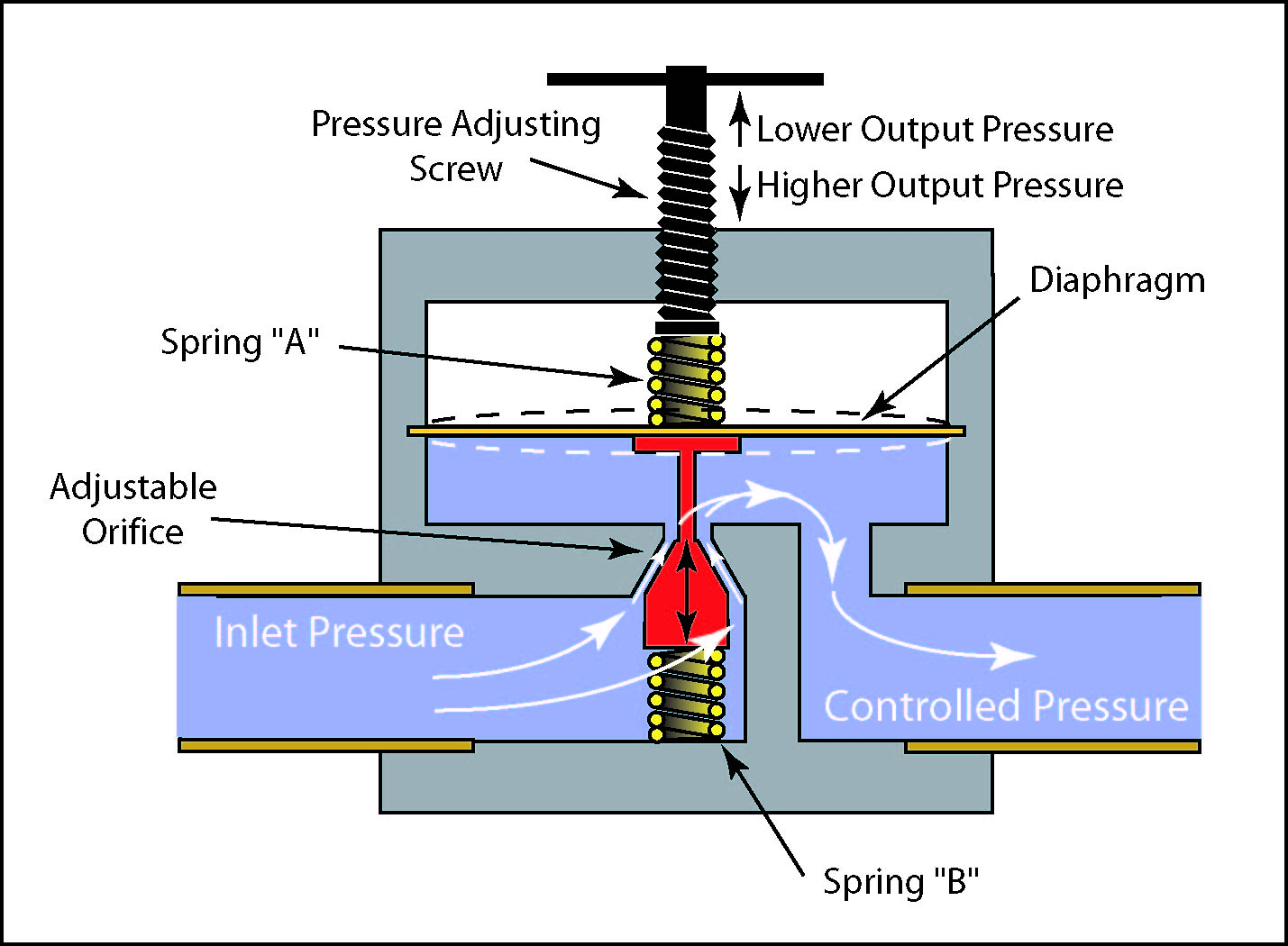A Pressure Reducing Valve (PRV), also known as a pressure regulator, is a crucial plumbing device designed to automatically lower and stabilize the water pressure coming into your home or a specific section of your plumbing system. It achieves this by creating a controlled restriction that reduces the higher, often fluctuating, upstream pressure to a consistent, lower downstream pressure.

Here’s a breakdown of how it works:
Table of Contents
ToggleCore Principle: Balancing Forces
A PRV operates on the principle of balancing opposing forces:
- The Force of the Adjustment Spring: This spring is set by the adjustment screw (which you turn when adjusting the water pressure regulator). It exerts a downward force that pushes the main valve (or disc) open.
- The Force of the Downstream Water Pressure: This is the pressure of the water after it has passed through the valve. This pressure acts upwards on a flexible diaphragm or a piston, which in turn pushes against the spring.
The PRV continuously works to maintain a balance between these two forces.
Key Components and Their Roles:
- Main Valve (or Disc): This is the component that actually opens and closes to control the water flow. It sits on a valve seat.
- Diaphragm (or Piston): A flexible membrane or a movable piston that is exposed to the downstream water pressure.
- Adjustment Spring: A heavy-duty spring whose compression is controlled by the adjustment screw.
- Adjustment Screw: The part you turn to increase or decrease the desired output pressure (the setpoint). By turning this screw, you compress or decompress the adjustment spring.
- Sensing Port/Channel: A small passage that allows the downstream water pressure to be sensed by the diaphragm/piston.
How the PRV Works Step-by-Step:
- No Flow / Low Downstream Pressure:
- When there’s no water flowing through the system (all faucets are closed), or when the downstream pressure is below the valve’s setpoint, the force of the adjustment spring is stronger than the force exerted by the downstream water pressure on the diaphragm.
- This dominant spring force pushes the diaphragm/piston down, which in turn pushes the main valve open.
- Water Flow / Downstream Pressure Builds:
- As water flows through the now-open valve, the downstream pressure begins to build up.
- This increasing downstream pressure exerts a stronger upward force on the diaphragm/piston.
- Achieving Balance (Setpoint):
- When the downstream pressure reaches the level you’ve set with the adjustment screw (the setpoint), the upward force from the downstream water pressure on the diaphragm balances the downward force of the adjustment spring.
- At this point, the main valve finds an equilibrium position, partially open, allowing just enough water to pass to maintain the set pressure.
- Responding to Pressure Fluctuations:
- If Downstream Pressure Rises Above Setpoint: The upward force on the diaphragm becomes stronger than the spring force. This pushes the diaphragm/piston further up, causing the main valve to close slightly. This restriction reduces the flow and drops the pressure back down to the setpoint.
- If Downstream Pressure Drops Below Setpoint: The downward force from the adjustment spring becomes stronger than the (now lower) upward force from the downstream pressure. This pushes the diaphragm/piston down, causing the main valve to open slightly more. This increases the flow, raising the pressure back up to the setpoint.
The Role of the Adjustment Screw:
When you turn the adjustment screw (e.g., when you are adjusting prv valve or adjusting prv water pressure):
- Tightening (Clockwise): You compress the adjustment spring more. This increases the spring’s downward force, meaning it will take more downstream pressure to balance it. Thus, the setpoint (the target downstream pressure) is increased.
- Loosening (Counter-Clockwise): You decompress the adjustment spring. This reduces the spring’s downward force, meaning it will take less downstream pressure to balance it. Thus, the setpoint is decreased.
In Summary:
A pressure reducing valve works like a dynamic, self-regulating seesaw. The adjustment spring acts as one side of the seesaw (your desired pressure setting), and the actual downstream water pressure acts on the other side. The valve constantly opens or closes slightly to ensure these two forces remain balanced, thereby consistently delivering the desired, lower water pressure regardless of higher, fluctuating upstream pressure.
